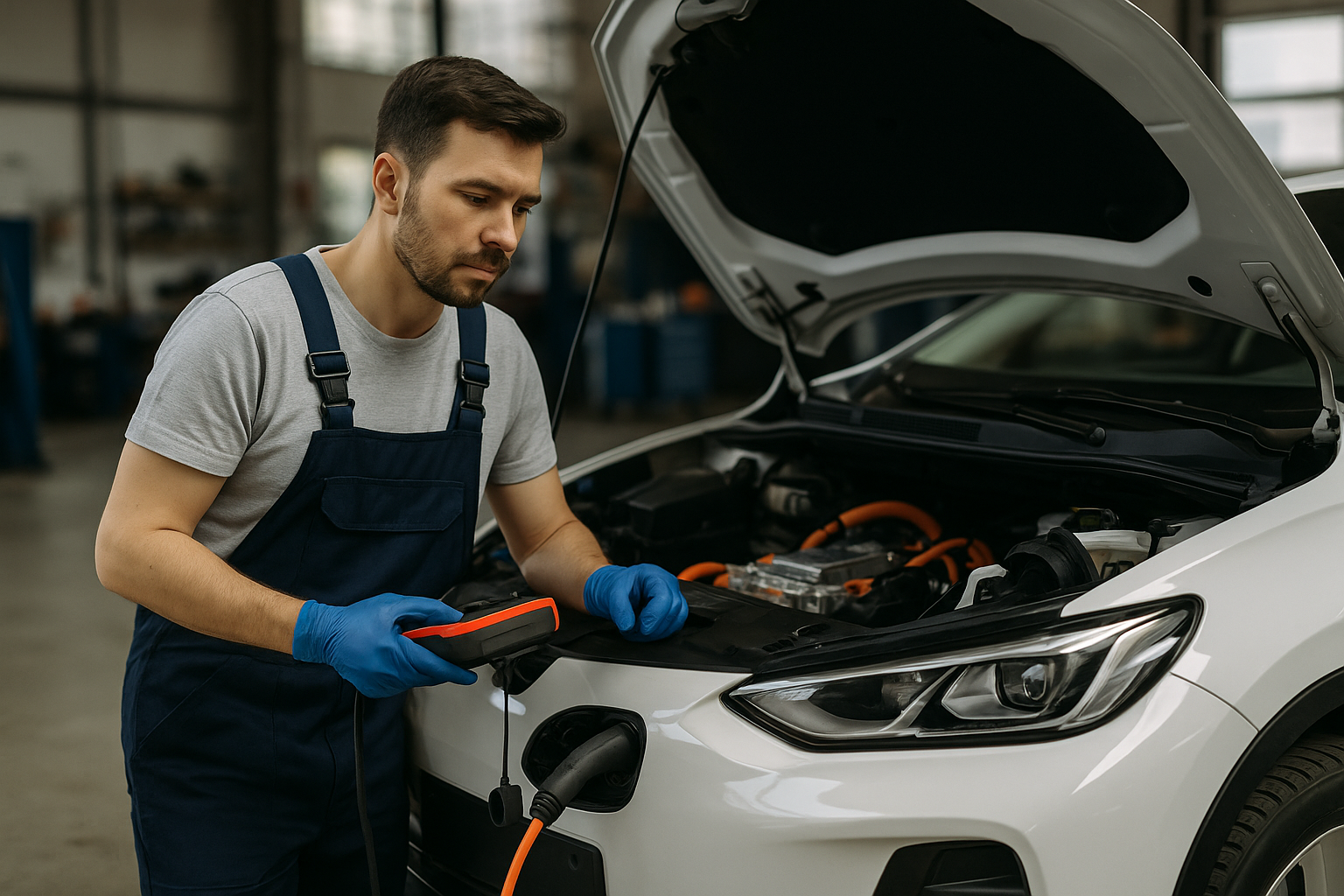Introduction
5 Myths About EV Maintenance—Busted by Mechanics. Electric vehicles (EVs) are no longer a futuristic novelty—they’re now cruising down our streets, quietly challenging the way we think about car ownership and maintenance. But with innovation comes confusion. Plenty of drivers still cling to outdated ideas about EVs, especially when it comes to maintenance.
We decided to go straight to the source—experienced mechanics who’ve serviced both gas and electric vehicles—to clear the air. What we uncovered might surprise you.
Here are five of the most common EV maintenance myths, debunked by the folks who actually get their hands dirty under the hood.
Table of Contents
Myth 1: EVs Don’t Need Any Maintenance at All
Let’s get this one out of the way first. Just because EVs have fewer moving parts doesn’t mean they’re maintenance-free.
What Mechanics Say:
“People think EVs are like smartphones—you just plug them in and go,” says Ravi Deshmukh, a certified EV technician based in Pune. “But they still need regular checks for things like brake wear, battery cooling systems, and tire rotations.”
EVs don’t need oil changes, true. But that doesn’t mean they’re immune to wear and tear. Brake fluid, cabin filters, and even suspension components still require attention—especially if you live in areas with extreme climates.
Want proof? Tesla recommends routine maintenance checks every 12,500 miles or annually. So yes, skipping the mechanic altogether isn’t an option.
Myth 2: Battery Replacement Happens Every 5 Years
This myth stems from fears around battery degradation—a legitimate concern, but often blown way out of proportion.
What Mechanics Say:
“It’s rare to replace a full battery pack before 10 years unless there’s damage,” explains Shalini Iyer, who runs a hybrid and EV repair shop in Bengaluru. “Most drivers will change vehicles before the battery dies.”
According to a recent study by Recurrent Auto, most EV batteries retain 80% of their original capacity even after 100,000 miles (source).
Some EVs on the road, like early Nissan Leafs and Chevrolet Bolts, are still performing well a decade later with only minor degradation.
Myth 3: EV Repairs Are More Expensive Than Gas Cars
The initial cost of EV repairs can look steep—especially if you’re comparing it to a cheap oil change or a spark plug replacement. But over the long run, the story flips.
What Mechanics Say:
“Sure, if your battery fails out of warranty, it’s pricey. But otherwise, you’re spending less overall,” says Rakesh Jadhav, who transitioned from petrol engines to EVs over the last five years.
There’s no engine oil, timing belts, exhaust systems, or spark plugs to replace in an EV. And regenerative braking systems even reduce brake pad wear significantly. Over a decade, that means fewer visits to the shop—and fewer surprise bills.
A study by Consumer Reports found that EV owners save around $4,600 in maintenance and repair costs over the lifetime of the vehicle.
Myth 4: You Can’t Service EVs Outside of Dealerships
This myth is partly fueled by automakers who push for dealer servicing—but the real world is starting to look different.
What Mechanics Say:
“Independent garages are catching up fast,” notes Shalini Iyer. “We’ve invested in training and tools, and we’re seeing more EVs every month.”
Thanks to the Right to Repair movement, more independent shops now have access to diagnostic tools and training that were once locked down by manufacturers.
Some platforms, like Electrified Garage in the U.S. and newer local ventures in India and the UK, are popping up to cater specifically to non-dealer EV servicing.
So, no—you don’t have to be chained to your dealership for the next decade.
Myth 5: EVs Are Bad in Cold Weather and Always Break Down
Cold climates do affect EVs—but the idea that EVs constantly fail in winter is a serious exaggeration.
What Mechanics Say:
“Batteries lose range in cold weather, but they don’t just shut down,” says Ravi Deshmukh. “Preconditioning the battery and keeping the car plugged in helps a lot.”
Newer EV models are designed with battery thermal management systems that keep performance stable even in low temperatures. And winter tires, just like in petrol cars, can make a huge difference in grip and control.
Sure, you might lose 10-20% of range during a snowstorm—but that doesn’t mean you’re stranded. Most EV drivers learn to plan accordingly, and smart battery management makes sure you’re not caught off guard.
Real-World Experience: An EV Owner Speaks
Sneha Kulkarni, a Pune-based architect, bought her first EV—an MG ZS EV—back in 2021. “I was worried about maintenance at first, especially since my family runs a traditional mechanic garage,” she laughs. “But honestly, apart from tire rotation and a cabin filter change, I haven’t needed to do much.”
She adds, “The only learning curve was understanding charging patterns and managing range. Maintenance is the least of my worries.”
Conclusion
Electric vehicles might be quieter and cleaner, but that doesn’t mean they’re magical. They still need love, attention, and the occasional visit to a garage. However, much of the fear surrounding EV maintenance is based on myths, not facts.
As more skilled mechanics adapt and as EV technology matures, maintenance is becoming easier, not harder. So if you’ve been on the fence about going electric because of horror stories from the uncle-next-door or a Facebook post from 2015—take a deep breath. EVs are simpler than you think.
And the best part? Fewer oil-stained hands, fewer trips to the gas station, and a cleaner conscience.
Further Reading & References:
- Tesla Service & Maintenance Guidelines
- Recurrent Auto: How Long Do EV Batteries Last?
- Consumer Reports: EV Cost of Ownership
You can find more Automobile content:
https://allinsightlab.com/category/automobiles/

